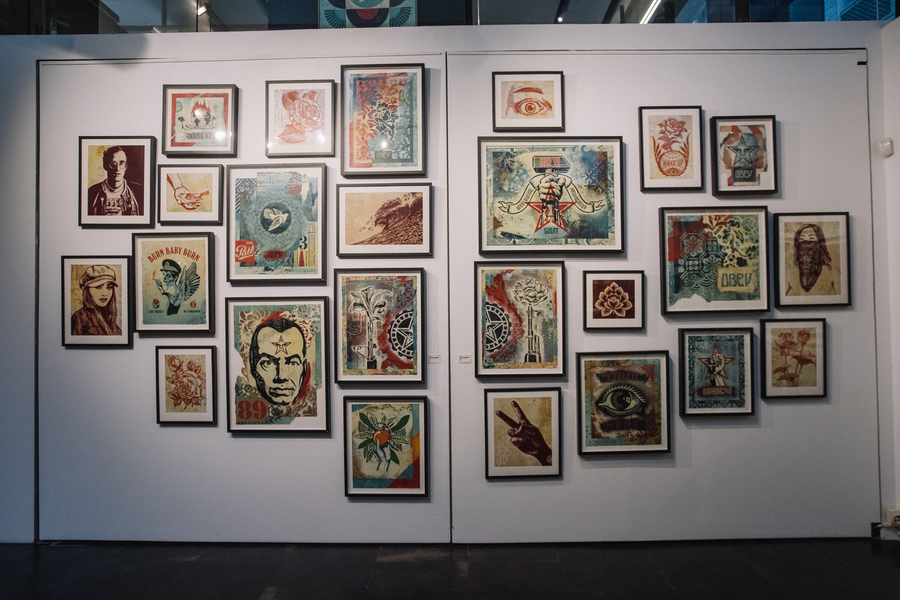
Navigating a changing landscape.
Former Swiss Banker turned gallerist and collector, Sylvain Gaillard has been Dubai Opera Gallery’s Director for the past 7 years. Gaillard gives us a sneak peak into the emerging world of ‘NFTs’ and what this means for future collectors and artists. Further, is art destined for a 3D world? Read more below.
PR: Copia Group
1. Tell us about your journey in the art world and how you became the Director of the Opera Gallery in Dubai.
I started my career in finance right after college, but had always been passionate about art. I transitioned into the art world around 2011 back home in Switzerland, then it was a case of “right place right time”, since Opera Gallery was looking for a director in Dubai. Having never been to the region, I took a leap of faith and joined the group in March 2014, and the rest is history.
2. What do you look for when searching for new artists to display in the Gallery?
Artists are witnesses of their contemporaries. We look for artists that have a fresh take on the practice, artists that are telling a story, and artists that are pushing boundaries, whether in terms of their visual language or the medium that they use.
3. Has the pandemic had an impact on Opera Gallery? What changes have been made with regards to how people can view the art in a safe way?
The pandemic has accelerated the transition into our digital presence. We were able to capitalize on the situation and offer collectors new and safe ways of discovering our galleries, either through online viewing rooms or full 3D mapping of our galleries. If anything, the pandemic has just forced the entire industry to move towards a model that was predictable and inevitable.
From a business perspective, the pandemic has had a positive impact, we saw a very interesting spike in acquisitions, especially during months that have historically been “slow.”

4. What are your thoughts on the digital art marketplace? Do you think the pandemic escalated this new trend?
The move towards digital is something that nobody in the industry could afford to ignore, it had been set in motion years ago and there is no turning back. Physical and digital are not mutually exclusive, but rather complementary, so I embrace that change. The pandemic has not escalated the trend, rather, accelerated it.
5. It is reported that digital art is the future – can you please explain what ‘NFT’ is for those of us who aren’t familiar yet? What are the pros and cons of NFTs for artists? For collectors?
The future will definitely encompass a portion of art that is digital, it’s a generational thing, and it’s already started.
An “NFT” is a piece of digital art registered through a blockchain. This allows for a full traceability, certificate of authenticity, and most importantly proof of ownership. It also introduce a wide array of attractive options such as embedding “artist’s resell rights” amongst other things.
It’s too early to clearly define what the pros and cons are for both artists and collectors. I believe we’re still in the exploration phase, and some proper conclusions will be drawn in due time when the dust settles!
6. How will galleries be affected by NFTs? What can they do to navigate the changes?
I firmly believe that galleries can’t ignore NFTs and will have to adapt to the demand for such products. Much like established artists launched the trend of more “commercial” objects and collectibles to reach out to a broader base, the NFTs are the next logical steps. Artists are keen on producing NFTs, so galleries won’t have the choice but to offer them in some way shape or forms to their collectors. Right now it’s a learning curve, we’re collectively observing what is happening and how to navigate this disruptive change.
7. Do you have any advice for new artists looking to make a name for themselves in the region?
Work on your craft, have a story to tell, and try to be articulate about your practice is always a good place to start. Then the logistics aspects come in, such as finding the gallery that is the right fit for you, and having somebody support and promote your art.
"Physical and digital are not mutually exclusive, but rather complementary."

About the Editor
UK native Saja is deeply motivated by emerging social and political concerns around sustainability. The young freelance writer enjoys writing about the intersection of sustainability, fashion and social justice.



